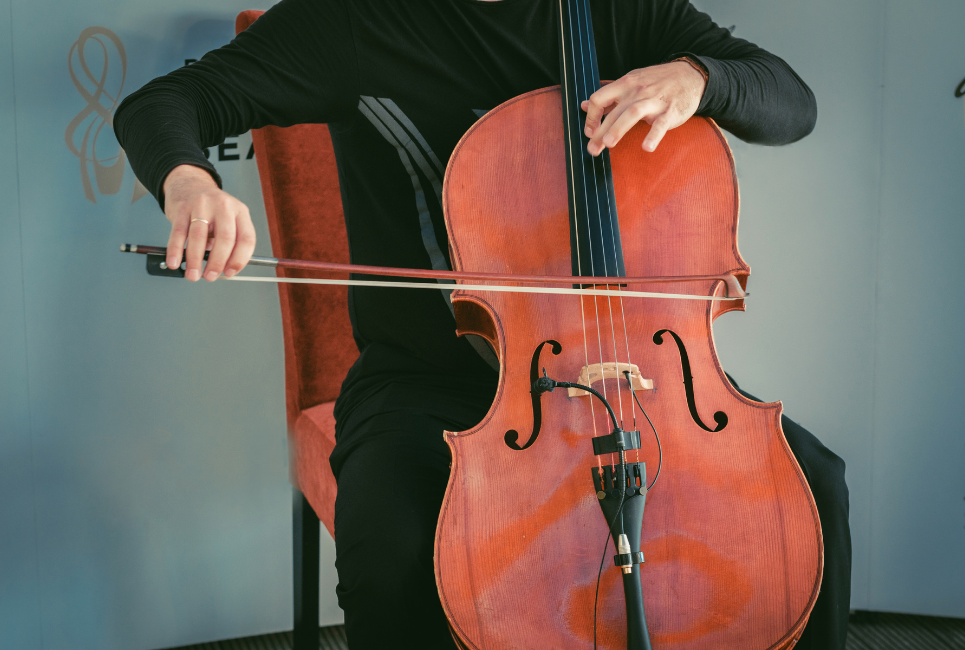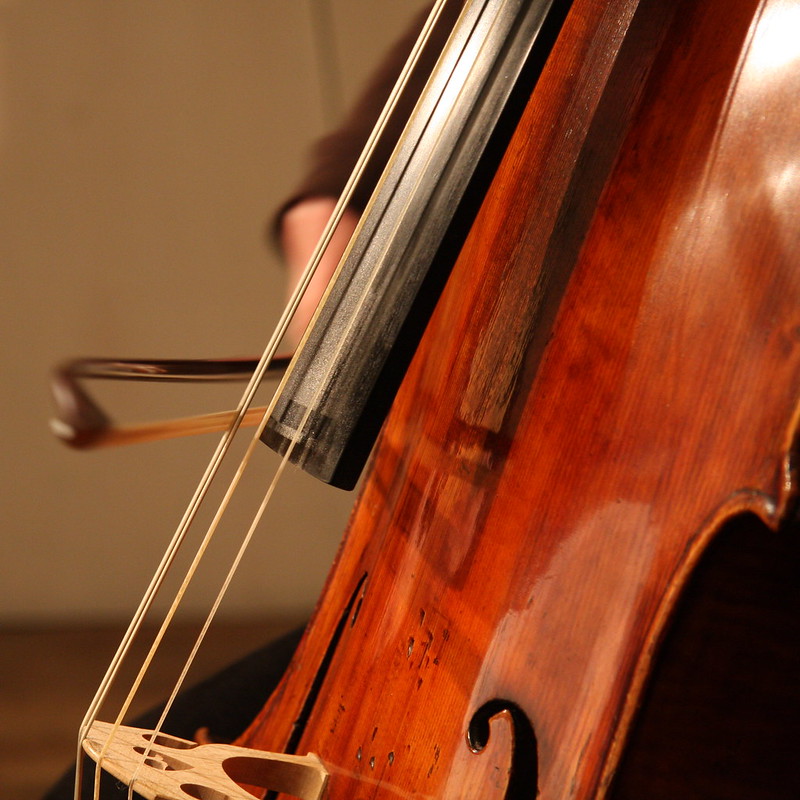- How to Find the Best Alto Trombone - May 31, 2022
- How to Find the Best Bass Trumpets - April 23, 2022
- Best Yamaha Saxophones Brand Guide - April 21, 2022
Many cellists turn up their noses at electric cellos. They complain that the electric cello’s sound is less rich and complex and its response more limited than the original model, and worry that students learning on an electric cello will substitute effects for bowing and fingering technique. The truth of the matter is that acoustic and electric cellos are as different as acoustic and electric guitars. Each comes with advantages and limitations, but both have their uses in recording and performance.
There are many reasons you might want to add an electric cello to your collection. You may want an electric cello for quiet rehearsal with headphones. You may want to plug into a guitar amp for busking or recording with a digital audio workstation (DAW) like ProTools or Cubase. You may be an electric guitarist who wants to leverage your skills and your collection of amplifiers and effects pedals. Whatever your needs, there is an instrument out there that is perfect for you. But how do you find the best electric cello?
That’s where I come in. I’ve sorted through listings for electric cellos cheap and dear. I’ve weighed their strengths and weaknesses, sampled audio clips, and consulted with experts to bring you a list of the best electric cellos out there. We have electric cellos here for every budget and for cellists ranging from students to seasoned symphony professionals. Read on and find out more!
How I Chose the Best Electric Cellos
Some of my guidelines when sorting electric cellos include:
Cellist Ability
A beginning cellist needs a durable, well-made instrument that stands up to long hours of rehearsal. An expert cellist wants the absolute best tone and has the skill to work around quirks in their instrument. For example, the last thing a newbie string player needs is the headache of keeping an 18th-century cello in tune, no matter how beautiful it sounds when you get everything dialed in. Instead of investing in an expensive professional model, beginners will do better buying a student instrument and spending the savings on music lessons.
Electric Cello Use
Because electric cellos are lighter, less expensive, and more resistant to heat or humidity extremes than acoustic instruments, there are many situations where a cellist might want an electric. Are you using your electric cello as a second instrument or as your primary cello? What genres will you be playing? Are you going to be using your electric cello for touring or as a rehearsal instrument? These are just a few questions to consider when you’re shopping for your new electric cello.
Solid-Body or Hollow-Body
Most electric cellos use a solid body or a simple frame with a fingerboard and pickups that transmit the signal to an amplifier or DAW. Others have hollow bodies that function like the resonant wooden bodies of acoustic string instruments. Hollow-body electric cellos add resonances and depth to the signal and produce a sound that is closer to what audiences expect from an acoustic cello. But hollow-body instruments are also bulkier and can be more fragile than a solid-body instrument.
Budget
Electric cellos are less expensive to make than acoustic instruments. You can find lots of cheap electric cellos on Amazon and elsewhere. The instruments I’ve chosen run the price gamut. My least expensive pick comes in at under $400, while our top pick will set you back around $3,000. You can find instruments costing less, and instruments costing more. I focused on price-to-value ratio. A reliable $400 student instrument has more value for beginners than a $99 instrument with faulty pickups and bad intonation.
Top Pick: Bridge Draco
The Bridge Draco’s hollow body gives it a richer, warmer sound than many electric cellos and makes it better suited for electric takes on the classical cello repertoire. Many full-time electric cellists swear by the Bridge Draco, including British composer and performer Simon McCorry, who says that his Bridge Draco is “a pleasure to play.” If you are serious about exploring the possibilities an electric cello offers, the Bridge Draco is the best instrument you can buy.
Here’s Simon McCorry with the title track to his album The Illusion of Beginnings and Endings.
Best Electric Cello for Beginners: Cecilio CECO
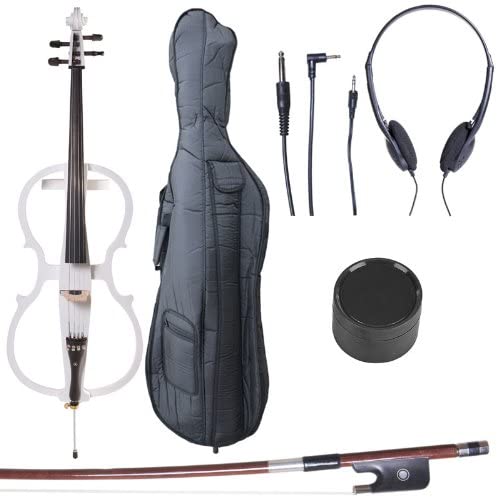
If you’re curious about electric cello and want to try one out, the Cecilio CECO is a reasonably priced instrument that will help you decide if electric cello is for you and serve you as a backup or rehearsal instrument for years to come.
Student musicians have come to rely on Cecilio for well-made but inexpensive instruments. While you can find cheaper instruments online, Cecilio has a reputation for reliability and quality control that is lacking with many anonymous sellers. For a bit under $400, the Cecilio CECO provides you with everything you will need to start playing immediately. You get an electric cello, a bow, rosin, an auxiliary cable, rehearsal headphones, and the 9-volt battery that powers the pickup!
The Cecilio punches well above its price point. Ebony fingerboards and mother of pearl inlays are not something you expect to see in an inexpensive Chinese cello. You can upgrade the strings, bow and headphones as your cello skills improve. Cecilio sells its electric cellos in several different models and colors. Smaller players can order a CECO in 1/8, 1/4, 1/2, or 3/4 sizes. For many amateur and casual cellists a Cecilio CECO will be the only electric cello they ever need.
Pros
- Real ebony fingerboards and other features typically associated with more expensive instruments
- Line in jack lets you practice to a CD or MP3 background track
- Different sizes for younger or smaller players
Cons
- You can improve your instrument considerably by replacing the stock strings and accessories
Best Intermediate Cello: Stagg ECL 44 Series Electric Cello
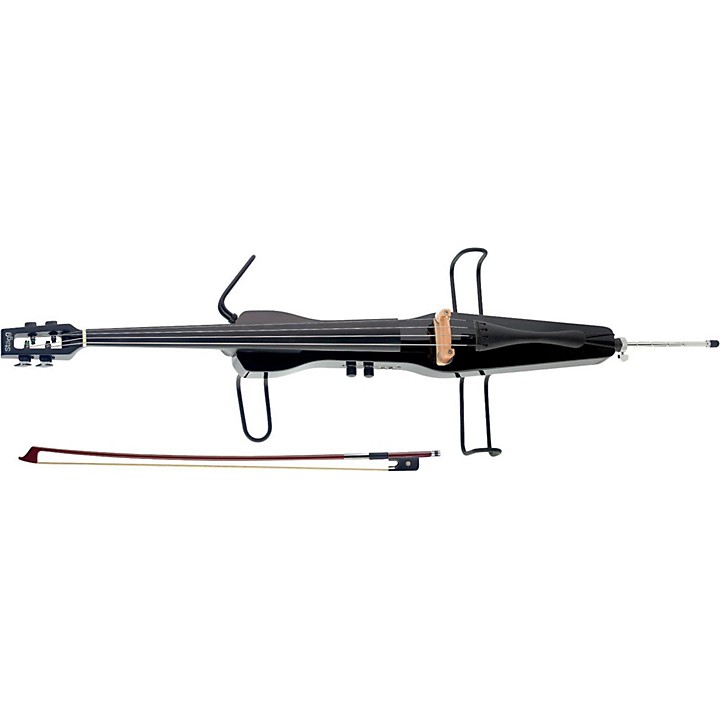
The Stagg ECL Series 44 costs over twice as much as the Cecilio CECO. Musicians are a notoriously underpaid bunch, and you want to make sure you get your money’s worth when you upgrade to a new instrument. So what will an extra $500 get you?
The ECL 44 has a 1/4″ output jack, the standard for guitar amps and guitar cables. The CECO has a 1/8″ jack. While it comes with a 1/8″ to 1/4″ cable, if you lose that or if you need a longer cable you’re going to be stuck looking for a non-standard style. This is important for somebody who travels to gigs a lot or who may be using rented or stage amplifiers.
The ECL 44 also comes with a volume and bass knob to adjust your sound, something the CECO lacks. And the ECL44 comes with removable knee rests that hold your cello comfortably while playing, then detach for easier storage.
These aren’t necessarily things a beginner would notice, but an intermediate player will appreciate the added convenience, comfort, and functionality. And as your playing technique improves, you’ll note the Stagg is more responsive than the CECO and has better sound. If you’re feeling constrained by the CECO’s limits, the Stagg may be the perfect step-up cello.
Pros
- Tone controls give you more control over your sound
- Detachable knee rests for comfort while playing and ease of transport after the gig
- Better sound and playability than student cellos
Cons
Best Electric Jazz/Rock Cello: NS Design CR4 4-String Electric Cello
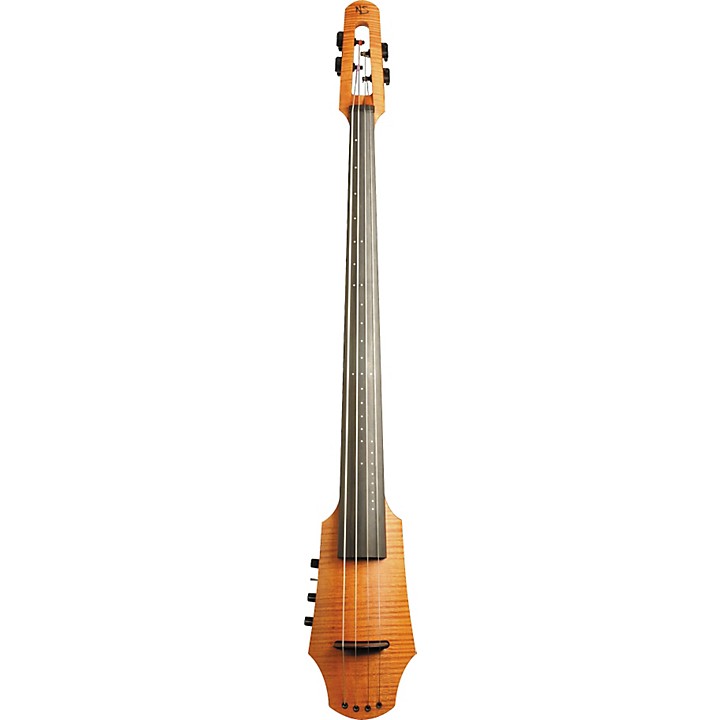
Ned Steinberger’s NS Electronics builds instruments that are designed to be played loud. If your band needs more cello, the CR4 will handle anything from Bach to Back in Black at whatever volume your eardrums and local police can stand. The CR4 is at the top of the NS Cello lineup, with the most sophisticated pickups NS Electronics can produce. The NS cello gives you control over volume, treble, and bass, as well as a switch that lets you control the patented NS Polar™ Pickup system.
The Polar pickup tracks both vertical and lateral vibration. Turn the switch up and the vertical pickup gives your pizzicato runs a bass guitar punch. Flip it down and the lateral pickup brings out the nuances of your bowing. The built-in preamp can give you a fat electric or clean acoustic sound. And the optional strap system lets you wear your electric cello like an electric guitar at a comfortable playing position. If you ever wanted to do an Eddie van Halen kneeling backbend during a cello solo, the CR4 can make your dreams come true.
The CR4 is more about form than style, with a lean design that gives you easy access to the highest positions. And if four octaves isn’t enough, you can also buy NS CR cellos with five or six strings. At nearly $4,000 the CR4 is the most expensive instrument on our list, but for those who need to play their cello fast and loud, it may be their ticket to fame.
Pros
- Some of the best pickup designs in the electric cello industry
- NS Strap System gives cello players more mobility than ever
- Lots of options to fine-tune your sound
Cons
- Expensive
Best Electric Cello for Full-Time Electric Cellists: Bridge Draco
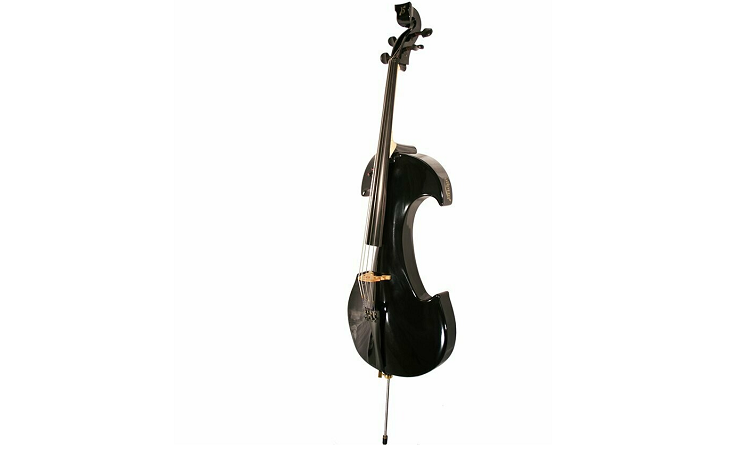
The Bridge Draco doesn’t just make beautiful noises, it’s a work of art. The Draco’s sweeping curves and candy colors will make you the center of attention during solos. And the Draco is as durable as it is pretty. Its hollow body is made with a composite carbon fiber/Kevlar material that holds up well to the rigors of travel and offers a rich resonance to the sound. (Many touring cellists, most famously Yo-Yo Ma, use carbon fiber cellos while touring for their toughness and powerful sound projection).
The Draco has the quick and sensitive bow response of the best acoustic cellos. If you’ve spent your hours in the woodshed practicing on an acoustic cello, you’ll find the Draco picks up your playing nuances better than lesser electric cellos. And while cheaper electric cellos use off the shelf electronics, Bridge builds the Draco with a proprietary piezoelectric pickup with superior dynamic range and accuracy.
With the Draco’s volume and tone controls, combined with any effects you wish to add to the chain, you should have no trouble dialing in exactly the sound you want.
If you want to make a career out of the electric cello, the Bridge Draco will be there with you for a lifetime of performances and recordings. For serious electric cellists the Bridge Draco is the best electric cello on the market.
Pros
- Available in a wide variety of colors and finishes
- An excellent choice for jazz, rock, pop, house, and neoclassical performers
- Hollow body gives the Draco better sound than many electric cellos
Cons
- Will look brilliant on most stages, but may look a bit out of place in a conventional string quartet
Best Electric Cello for Acoustic Cellists: Eastman Albert Nebel 601+
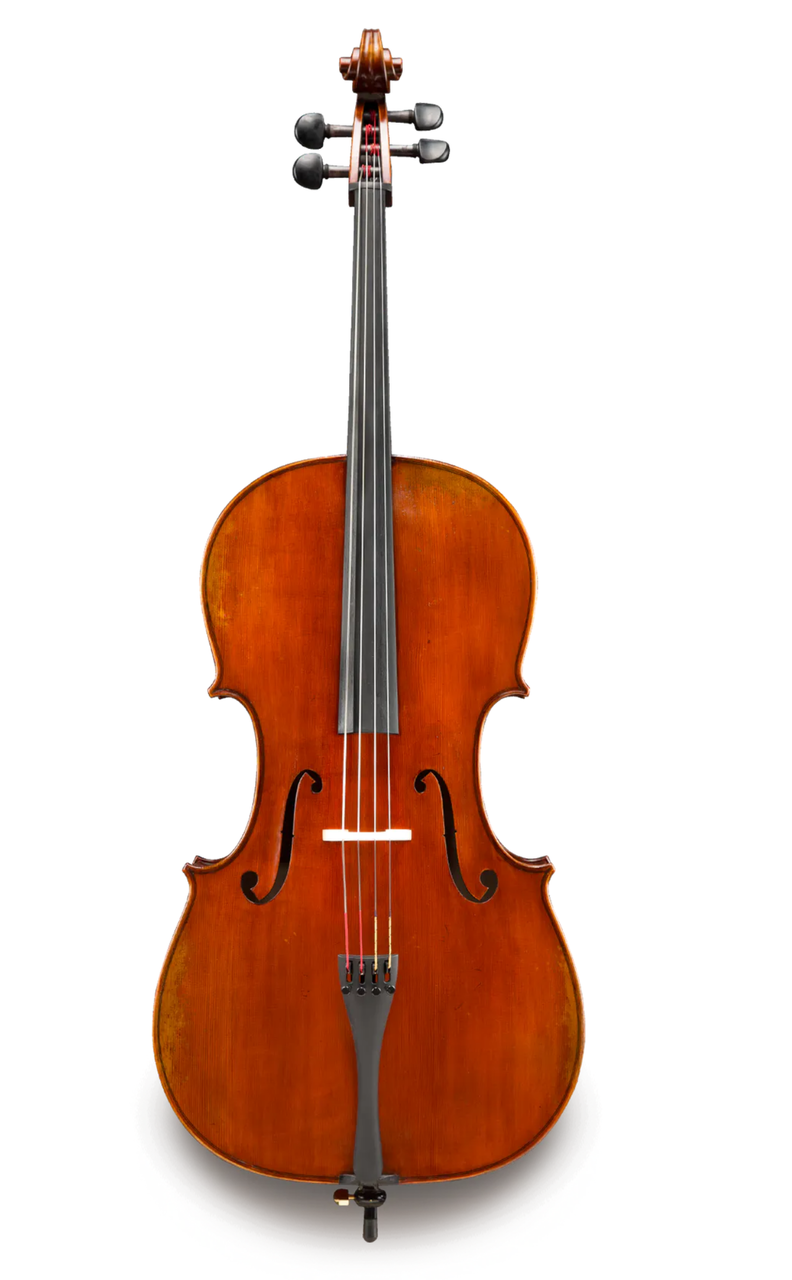
If you are an acoustic cellist who wishes it was easier to connect to an amplifier, the Eastman Albert Nebel 601+ cello may be just what you are looking for. The Nebel VC601+ is Eastman’s popular Albert Nebel VC601 cello with a factory-installed pickup and 3.5mm (1/8″) jack near the endpin. The body is made with aged spruce and aged German maple, giving the 601+ the complex sound of a vintage cello.
If you’re recording classical material, the 601+ lets you connect directly to a controller or a DAW. Preserving your performances of Bach’s solo cello repertoire has never been easier! If your sound engineer prefers mikes to pickups (a hotly debated issue amongst sound engineers tasked with recording cellos), you simply leave the pickup unplugged and let the engineer amplify the signal as they wish. And if you are playing in an orchestral or chamber setting, nobody will ever know your 601’s secret identity.
The 601+ has all the bulk and fragility drawbacks of any fine cello, and while you can use effects pedals with the 601+, it lacks the volume and tone controls you find on a dedicated electric cello. But for versatility and beauty of sound, the 601+ is difficult to beat. Anybody looking for a professional cello with built-in pickup really needs to talk to the folks at Eastman Strings.
Pros
- A top-quality professional cello
- Can be played with or without amplification
- Vintage tone thanks to aged wood
Cons
- Like all acoustic cellos, the 601+ is bulky, fragile, and sensitive to heat and humidity
Frequently Asked Questions: (FAQ)
Answer: Electric cellists can rely on effects like a volume pedal where acoustic cellists must rely on bowing weight and force to master sound projection. This means electric cellos can be easier to play, but it can also encourage beginners to rely on effects rather than mastering proper cello technique. Students can certainly learn on an electric cello, and those who learned on an acoustic will have to master some new quirks and techniques when they cross over. But most cello teachers recommend that beginners master their skills on an acoustic cello before, or alongside, playing an electric instrument.
Answer: With a solid-body electric cello, your playing will be barely audible if you are not plugged into an amplifier. “Barely audible” means you may be loud enough to annoy somebody in a small room with you, but will be inaudible if you are rehearsing with headphones behind a closed door. A hollow-body electric cello like the Bridge Draco will produce a louder sound, though still not so loud as an acoustic cello. An acoustic cello with an electric pickup can be played without amplification in chamber or orchestral settings, but plugged into an amplifier as required.
Answer: Electric cellos are very different than the more common acoustic cellos. Some critics complain their sound is less complex and interesting, as they lack the resonances and overtones of an acoustic cello’s body. But electric cellists have access to chorus, reverb, and other pedal effects not available to acoustic cellists. Electric cellos are lighter than acoustic cellos, less bulky, and less sensitive to heat and humidity. And the best electric cellos can produce some magnificent sounds indeed. Like every instrument, the electric cello has its strengths and weaknesses but every day more cellists make beautiful music on their electrified instruments.
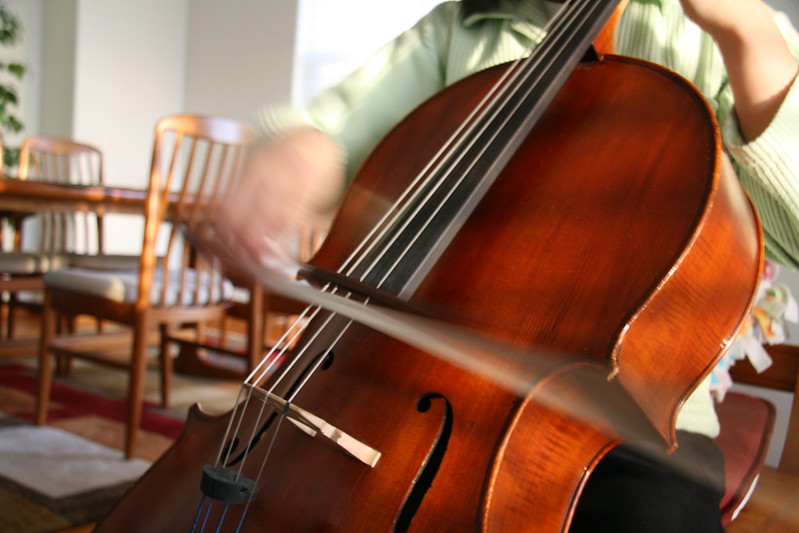
Conclusion
So what’s the best electric cello? If you’re a performer who needs a stylish, responsive instrument that sounds great, the Bridge Draco is the best electric cello. The Draco looks great and will work in a number of venues.
Jazz and rock musicians who use a lot of amplification and effects will find the NS Electronics CR4 the best electric cello for their needs. The CR4 gives you easy access to the highest positions and their optional strap systems let you play while standing or walking about onstage.
For curious cellists who want to try an electric cello, the Cecilio CECO is the best cello for students and beginners. Cecilio is a well-regarded manufacturer, and you will be able to rely on your CECO as you master the electric cello basics and later when you need a rehearsal instrument.
Whatever electric cello you choose, you’ve just bought a ticket to a new and fast-growing musical frontier. Here’s hoping you can make some great music on your claim. Happy playing!
Looking for more interesting readings? Check out:

